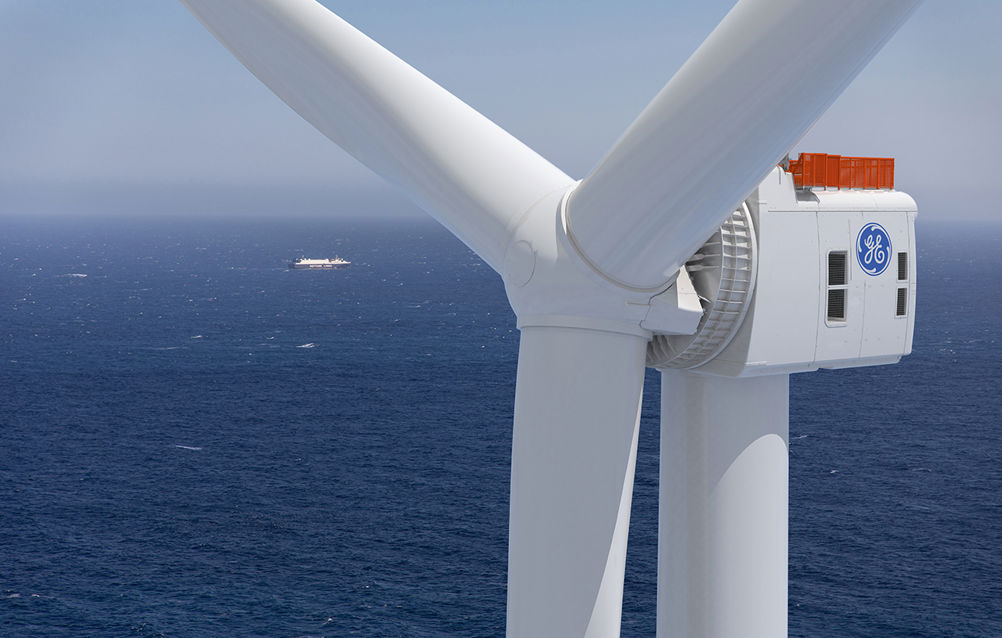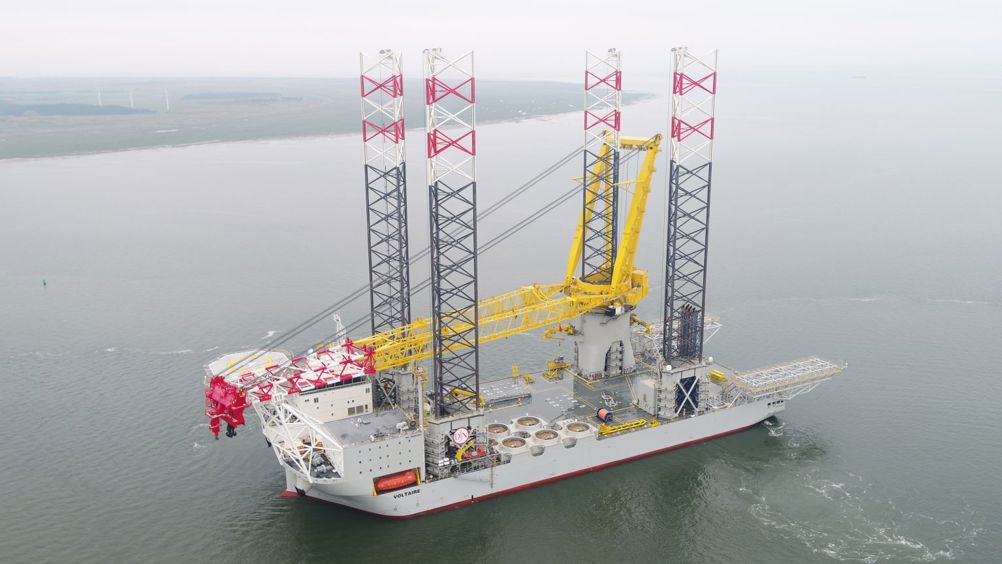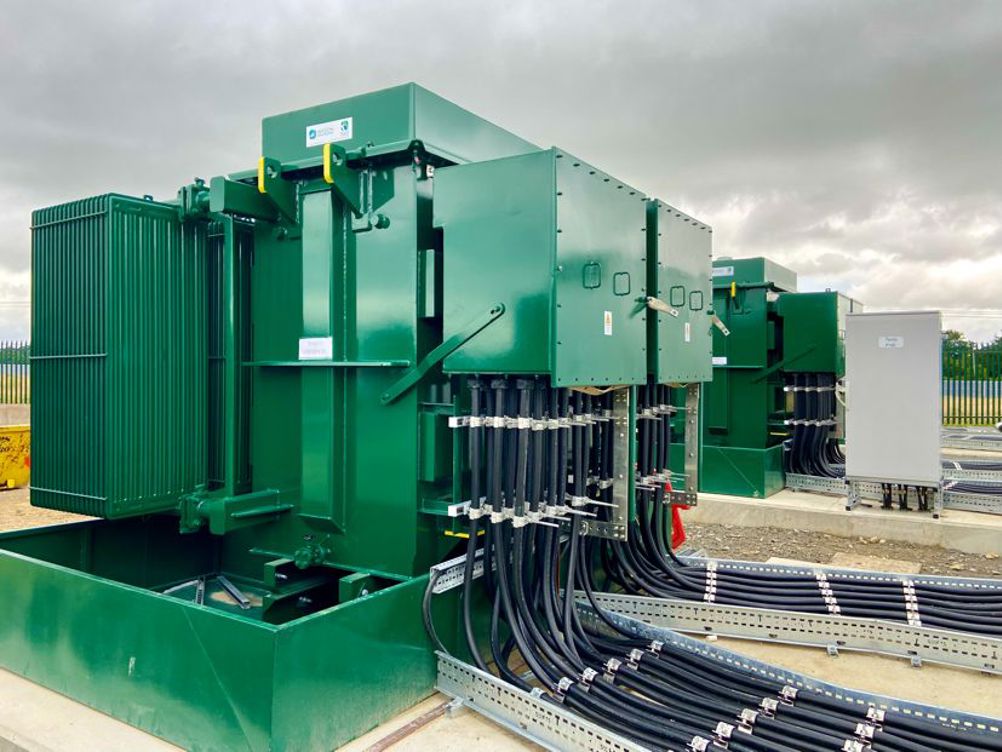Yorkshire and the Humber have been powering the industrialisation of the UK for centuries. Areas like West Yorkshire and South Yorkshire were major coal producers during the Industrial Revolution and well into the 20th century. The discovery of oil and gas in the North Sea in the late 1960s had a transformative effect on the UK’s energy supply, bringing the country’s 200-year coal dependency to an end.
Locating, extracting and refining vast quantities of these energy sources led to countless innovations being pioneered within the region, from machinery and ventilation systems to geological surveying techniques and safety practices. It also cultivated a skilled workforce, a well-developed energy infrastructure including ports, facilities and transportation networks, and an enduring commitment to R&D.
The region is home to a growing list of renewable energy projects that are the largest in Europe or the world or firsts in history
The region’s legacy in extractive industries, coupled with its strategic location, existing assets and ideal geographical features, uniquely position Yorkshire and the Humber to drive the next phase of industrialisation in the UK – the ‘Green Industrial Revolution.’
“Yorkshire and the Humber has become a hugely important hub for the UK’s booming renewable energy sector,” said Peter Kavanagh, CEO of Harmony Energy – one of the UK’s leading developers, owners and operators of utility-scale battery energy storage systems.
“The region is home to a growing list of renewable energy projects that are the largest in Europe or the world or firsts in history. Jobs are being created in deprived areas, local supply chains are being established and supported, and all while ensuring the future security of the UK’s energy supply and reducing reliance on foreign gas imports.”
Offshore assets
Harmony Energy is one of a rapidly growing number of green energy companies being drawn to Yorkshire and the Humber. Collectively, they are responsible for delivering projects spanning on and offshore wind, biomass, carbon capture and storage, hydrogen production and utilisation, smart grids and energy management, solar and energy storage solutions.
Offshore wind is particularly prevalent in Yorkshire and the Humber. The region’s strong and consistent winds, particularly along its extensive coastline, create ideal conditions for wind energy generation. The waters off its coast are also relatively shallow compared to other parts of the North Sea, making the installation and maintenance of offshore assets easier and less costly.
“Flagship offshore wind projects like Hornsea 2, alongside a strong industrial heritage and a burgeoning manufacturing supply chain, have made Yorkshire and the Humber an attractive place to invest in for the offshore wind sector, such as the world-class Siemens blade factory in Hull and Specialist Marine Consultants (SMC) based in Filey, North Yorkshire,” said Ajai Ahluwali, Head of Supply Chain at energy trade association, RenewableUK.
Approximately 40 miles beyond Hornsea 2 is another of the region’s landmark projects, the Dogger Bank Wind Farm. The offshore site is being built in three 1.2GW phases – A (95 wind turbines), B (95) and C (87). When complete, it will be the world’s largest offshore wind farm, capable of powering up to 6 million homes annually or about 5% of the UK’s demand.
Setting the standard
Dogger Bank Wind Farm is a joint venture between UK developer SSE Renewables and Norway-based Equinor and Vårgrønn. SSE Renewables is leading the development and construction, after which Equinor takes over as operational lead for the 35-year life of the wind farm.

Described by SSE Renewables Project Director, Olly Cass, as “pushing the boundaries of offshore wind development,” the construction of Dogger Bank Wind Farm is setting a new standard for how offshore wind energy projects are delivered.
Onshore construction began in 2020 and is now underway for all three phases. Offshore construction on Dogger Bank A started in Spring 2022, with commercial operations expected sometime in 2024. Dogger Bank B and C are due to follow in 2025 and 2026.
Construction on this scale in the challenging conditions of the North Sea has delivered several world-firsts that are expected to accelerate and optimise how future offshore projects are delivered.
Dogger Bank is the first to utilise GE’s ground-breaking Haliade-X turbine. Each turbine has a power output of up to 14MW, making it the most powerful offshore wind turbine in operation today. Each rotation of the 107m turbine blades can reportedly produce enough clean energy to power an average UK household for more than two days.
The project reached a major milestone in August 2023 when installation of the first turbines began, a feat made possible thanks to the arrival of Voltaire – the largest offshore jack-up vessel ever built with a lifting capacity of 3,200 tonnes.
“As offshore wind technology grows in scale and power, the industry needs stronger vessels capable of meeting these engineering challenges,” commented Cass.
Named after the pioneering European Enlightenment philosopher, Voltaire has been fitted with a highly advanced exhaust filtering system, making her the first of her kind to be an Ultra-Low Emission vessel (ULEV). The vessel, operated by Jan de Nul, will install turbines for all three Dogger Bank Wind Farm phases.

“Dogger Bank is exactly the type of project we had in mind when we took the decision to build Voltaire. The scale and characteristics of the offshore Dogger Bank turbines offer the perfect challenge for this next-generation, state-of-the art jack-up installation vessel,” said Jan Van Impe, Manager of Jan De Nul Offshore Renewables.
Making the connection
Construction reached another milestone this year with the installation of the world’s first unmanned High Voltage Direct Current (HVDC) offshore substation. The first of three to be installed, the Dogger Bank A platform sits on a four-legged steel jacket foundation structure fixed to the seabed 28m below.
Commenting on its lean design, Cass noted, “Removing the need for personnel to stay on the platform meant it has been possible to eliminate elements such as the living quarters, helideck and sewage systems, resulting in a 70 per cent reduction in weight (per megawatt) of the topside compared to previous platforms installed, and cost savings of hundreds of millions of pounds.”
Wind, like solar, is an intermittent form of energy generation….BESS overcome these challenges by storing surplus power and balancing the network when it requires it most.
The platform will receive 1.2GW of AC power from Dogger Bank A’s 95 offshore wind turbines and convert it to DC, which will then be sent to an onshore substation. More typically used on interconnectors to transfer power between countries, the HVDC connection will ensure the energy transmitted to onshore substations is done with minimal losses.
Electricity from Dogger Bank A and B will come ashore to the Creyke Beck substation near Cottingham, East Yorkshire, where it will be fed into the National Grid. Dogger Bank C will connect to the grid via the Leckenby Substation in Teesside.
Creyke Beck substation is also a critical junction point for another of the region’s landmark renewable energy developments – Harmony Energy’s Pillswood site, Europe’s largest battery energy storage system (BESS). The site is owned by Harmony Energy’s listed Investment Trust, Harmony Energy Income Trust (HEIT).
“Locating our site adjacent to the same connection point as Dogger Bank just makes sense from an electricity flow perspective,” said Harmony Energy CEO, Kavanagh. “Wind, like solar, is an intermittent form of energy generation; it doesn’t happen 24/7. This frequently leads to insufficient power during peak demand periods or an oversupply when power isn’t required.
“BESS overcome these challenges by storing surplus power and balancing the network when it requires it most. This creates a more secure and efficient system that is environmentally and financially sustainable.”
A balancing act
The Pillswood site went operational in November 2022 and can store up to 196MWh of electricity in a single cycle, enough energy to reportedly power around 300,000 homes for two hours. Tesla’s two-hour Megapack lithium-ion battery, described by Kavanagh as “market-leading battery technology,” lies at the heart of the system.

While other developers focused on 30-minute or 1-hour batteries, Harmony Energy realised the UK energy system would need longer duration storage as the country continued to decarbonise and decentralise power generation.
“Revenue opportunities from batteries broadly fall into two categories – ancillary services and trading, or arbitrage. Ancillary services are services such as frequency response that help ensure the grid remains at a stable frequency and avoids blackouts.
“A 30-minute battery is ideal for that application because you only need a very short time to respond. But we could see that market quickly becoming saturated. Trading, i.e. charging the BESS when energy is cheap and pumping it back to the network when the price has risen, is a far larger and more lucrative market. Plus, global demand for this sort of balancing mechanism is growing exponentially.”
Kavanagh intends to continue scaling the business to meet this fast-growing global demand. Pillswood is the first of eight similar BESS projects Harmony has developed inside HEIT and through joint ventures over the past 12 months. Harmony also has plans to replicate its UK success in continental Europe.
Harmony is also developing multiple large-scale solar PV farms across the UK and has won approval to develop New Zealand’s largest solar farm, expected to generate enough electricity to power 30,000 homes.

The team behind Dogger Bank isn’t resting on its laurels either. A new phase, Dogger Bank D, has been proposed that would add 1.8GW of energy to the 3.6GW already in development.
The “booming renewable energy sector” in Yorkshire and the Humber is a triple-win, concluded Kavanagh.
“It is driving economic growth in the region by generating new jobs, infrastructure, investment and supply chain opportunities. It supports the UK government’s ambition to decarbonise the power sector while boosting energy security and reducing reliance on imports. And it showcases the UK’s engineering and technological prowess on the world stage, solidifying its reputation as a leader in green energy solutions.”










Guest blog: exploring opportunities for hydrogen combustion engines
"We wouldn't need to pillage the environment for the rare metals for batteries, magnets, or catalisers". Batteries don't use rare...